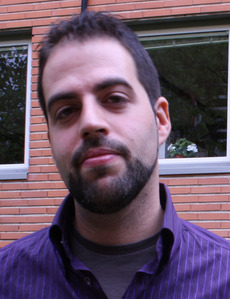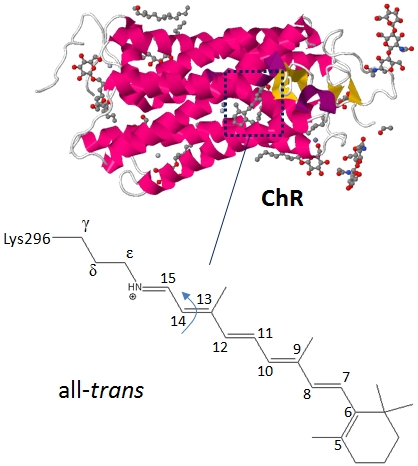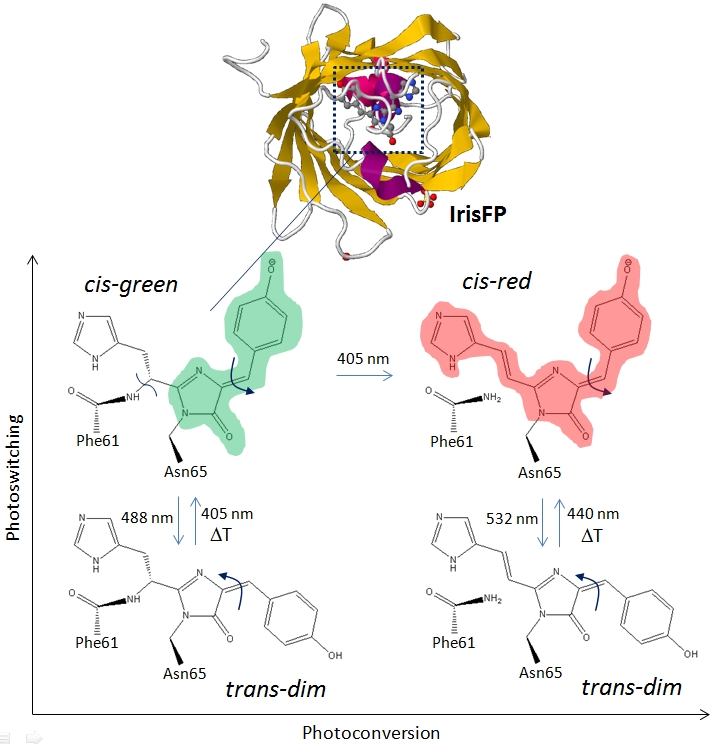Project
Molecular photoswitches are able to convert solar or ultraviolet energy into mechanical energy, leading to a controlled motion between two different states, being of special interest in the biochemical field. Channelrhodopsins (ChRs) are light-driven ion channels characterized by charge transfer and cis-trans isomerization of its retinal chromophore as first photoinduced events, followed by ion-channel opening. In spite of recent applications to optogenetics, fundamental aspects of ChR function-structure relationships are still not known. For remote control of neural activity, the azobenzene-coupled light-activated ionotropic glutamate receptor (LiGluR) is also an excellent candidate. As additional feature of a two-states photoswitch, considerable interest has been focused on the eventual possibility of a state to emit at a defined wavelength. This can be accomplished by so called fluorescent proteins (FPs) Especially, IrisFP has been the first characterized four-states FP, which multiple photoactivation modes created new opportunities for further technological advances. By means of quantum mechanics coupled molecular mechanics state-of-the-art techniques, we aim to study the common fundamental photophysical and photochemical processes by which ChR, LiGluR and IrisFP perform their switching cycles (resulting in all cases in a photoinduced cis-trans isomerization), in order to propose and test different variants by which a modulation of their absorption and emission properties can be envisaged. Especially, excited state pathways and dynamics will be calculated by multiconfigurational quantum chemistry techniques (CASPT2//CASSCF), possibly allowing a comparison with experimental values, when available (e.g. ultrafast femtosecond spectroscopy). This will ensure an appropriate description of crossing regions between electronic states (i.e. conical intersections and avoided crossings), which are the responsible of the photoproduct formation. Considering the importance of present and future potential applications for ChR, LiGluR and IrisFP, a rational design of their photoinduced properties is highly desirable.




